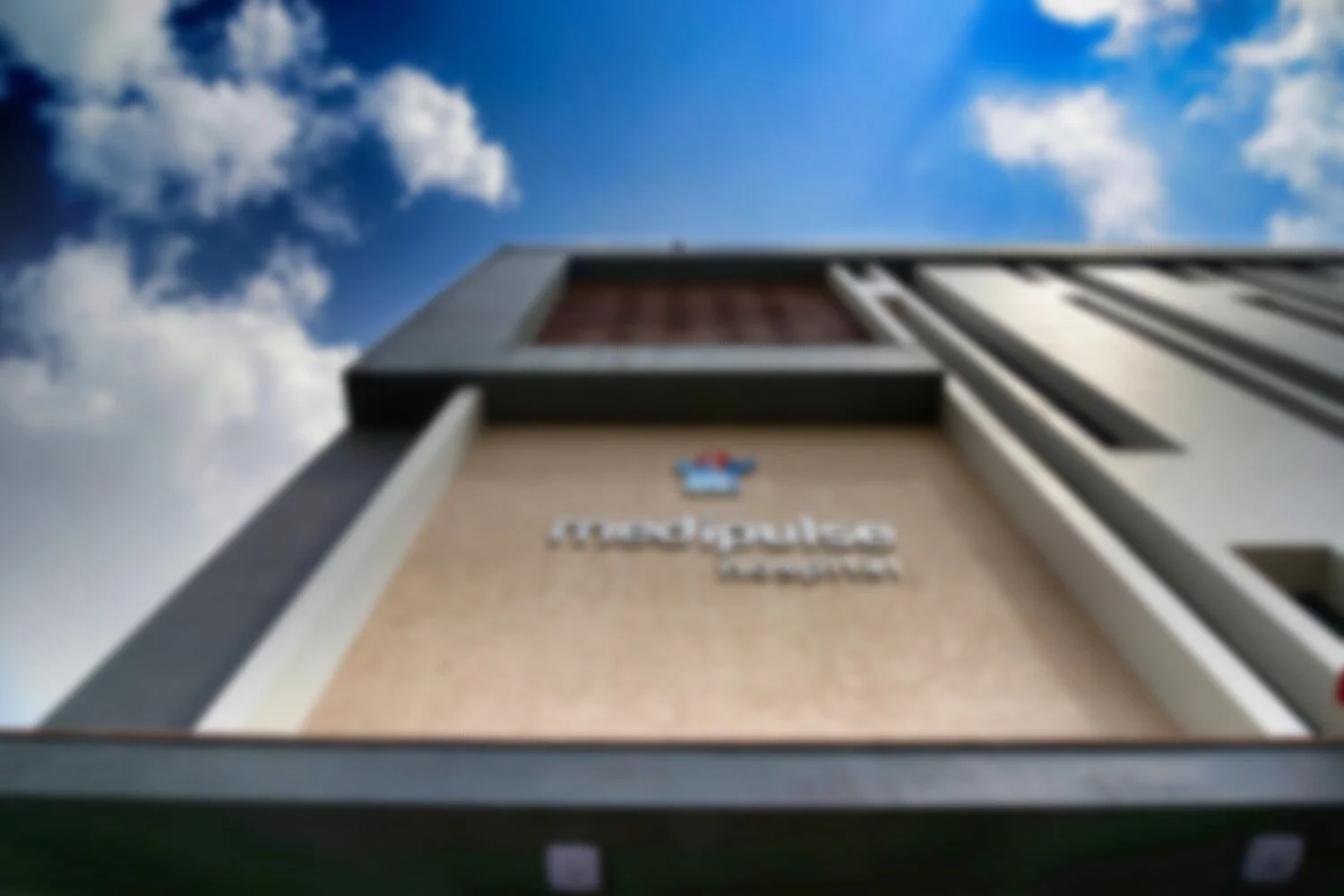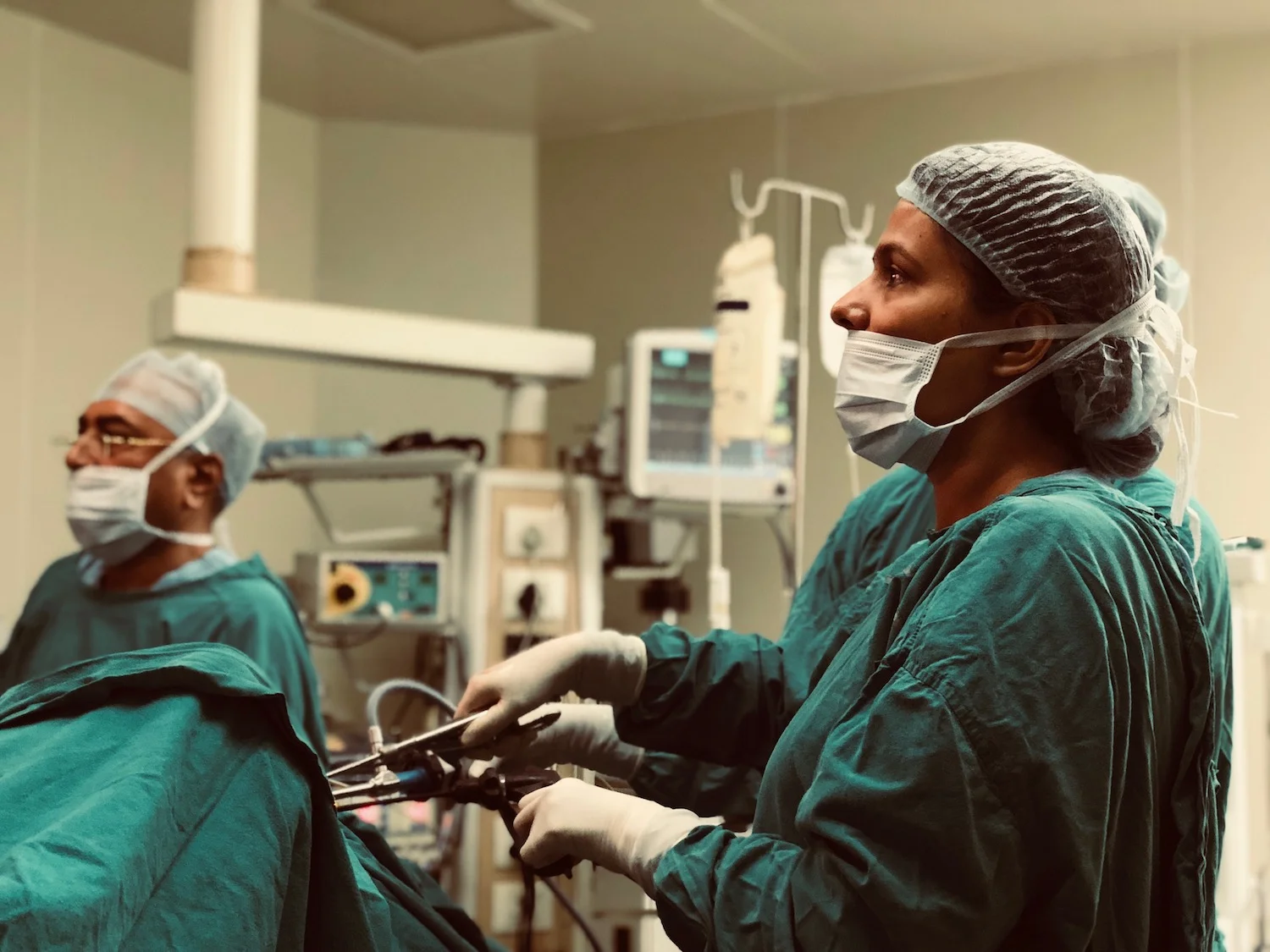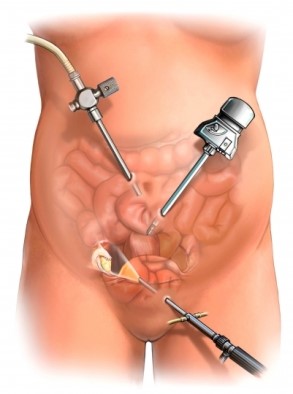
Timely Vs. Delayed Laparoscopic Cholecystectomy: Know The Benefits
Laparoscopic Cholecystectomy offers a welcoming relief from sudden and unbearable gallstone attacks. Also known as keyhole surgery, timely laparoscopic surgeries reduce the risks of gallstone complications significantly. Read this blog to know more.
Gallstones are solid particles that are formed in the gallbladder due to overproduction of cholesterol and bilirubin in the liver. In the past, gallstones were treated using open surgical procedures, which meant more extended hospitalization and recovery time for the patients. However, laparoscopic Cholecystectomy is a minimally invasive alternative for the treatment of Gallstones. With only a few minor incisions; single or multiple gallstones can now be removed within a few hours.
Gallstones Symptoms
Gallstones do not have any active symptoms, and initially, an individual may feel little or no discomfort. But if left untreated for long, gallstones can cause multiple complications including cholecystitis (gallbladder inflammation), jaundice, intense periodic pain in the abdomen, etc. Acute abdominal pain, high fever, yellowing of the skin, and eyes are seen as early signs of gallstones and must not be ignored.
Timely Vs. Delayed Laparoscopic Cholecystectomy
Laparoscopic Cholecystectomy has become the most preferred treatment for symptomatic gallstones. It is cost-effective, safe, and promises a better life for patients post-treatment. A surgeon will suggest ELC (early laparoscopic cholecystectomy) only upon confirmation that the inflammation does not obscure optimal view during surgery.
The first few days after gallstone diagnosis are usually considered as the best time for laparoscopic cholecystectomy. However, the time points for treating acute cholecystitis vary with inflammation. Even upon diagnosis, the treatment may be delayed to allow the inflammation or cholecystitis to subside. But this delay can cause a series of complications related to the liver and gallbladder. Let’s look at some of the key advantages that early LC offers over delayed LC.
1. Minimum Complications:
Early LC ensures that gallstones do not cause other major complications in the liver. In the worst of cases, gallstones become the reason for cancer of the gallbladder in patients. Early LC has helped significantly bring down mortality rates from acute cholecystitis or acute pancreatitis.
2. No GallBladder Attack:
With early LC, patients no longer need to suffer from prolonged excruciating abdominal pain. If LC is delayed, patients will have to bear with periodic intense pain, eventually leading to fever. A gallbladder attack can last for a few hours and can come anytime, anywhere.
3. Cost-Effective:
Early LC is cost-effective too. Gallstones can be removed within a few hours, and the patients can leave the hospital on the same day. In comparison to this, a delayed LC involves considerable visits, routine diagnosis, more extended hospitalization, and recovery time. In sharp contrast, early LC is not at all time consuming and extremely cost-effective.
When To See A Doctor?
Gallstone attack can last up to a few hours, and one must see a doctor at the first occurrence of uninvited and intense stomach/abdominal pain. Any pain in the right shoulder, upper, and central abdomen must not be ignored considering the multiple health issues associated with gallstones. The doctor will perform some routine diagnosis, including CT scan and blood tests to confirm gallstones.
Moreover, pregnant women, people suffering from obesity, people on cholesterol-lowering medications, and people over 60 years of age are at higher risk of gallstones. These individuals must be wary of symptoms like sudden fever, increased heart rate, nausea, fatigue, or confusion, and must visit the doctor for gallstone diagnosis.
The abdominal is one of the most critical regions in our body. It houses some of the most important organs that determine the overall well-being of our body. At Medipulse, we offer the most advanced Laparoscopic surgery for Gallbladders, appendices, and colons. Dr. Vivek Agarwal is the best Laparoscopic surgeon in Jodhpur. His expertise has helped hundreds of people in town.
Why undergo Laparoscopic Surgery for Hernia?
A hernia is a condition in which parts of an organ, often in the abdomen, are displaced due to the weak muscular wall that keeps organs in place. It is the disease of the abdomen, but they can appear in other parts of the body, including the groin, belly button, and upper thighs.
A hernia is a condition in which parts of an organ, often in the abdomen, are displaced due to the weak muscular wall that keeps organs in place. It is the disease of the abdomen, but they can appear in other parts of the body, including the groin, belly button, and upper thighs.
Unlike other abdominal diseases, hernia is not very common and approximately only 5% of the population
develop hernia during their lifetime. The condition can be caused due to a combination of factors, for
instance, damage from injury, failure of the abdominal wall to close properly, chronic coughing, etc.
The individual suffering from a hernia can experience symptoms like a bulge or a lump in the affected area, pain or discomfort in the lower abdomen, feeling of heaviness in the abdomen, and aching sensation at the site of the bulge.
Laparoscopic Treatment
Sir Astely Paston Cooper has rightly said that "No disease of the human body, belonging to the province of the surgeon, requires in its treatment, a better combination of accurate, anatomical knowledge with surgical skills than hernia in all its variety."
Since hernia tends to get bigger, it often leads to life-threatening complications. So, with the passage of time, many treatment procedures have been developed for hernia, including laparoscopy. The laparoscopic repairs have also undergone considerable evolution with time.
Some of the traditional laparoscopic techniques even received criticism due to their failure to demonstrate good result; and hence, were abandoned. However, these techniques become more advanced with the advancement in medical science and technology. Today, laparoscopy is one of the preferred and advised treatments for the condition due to the benefits it offers.
Why Patients Should Undergo Laparoscopy
The minimally invasive technique of laparoscopic surgery can be used to repair most of the common hernias. Generally, three half-inch incisions are made in the abdomen instead of one large cut. A camera is then inserted to visualize the hernia and guide the surgeon’s movement.
● The biggest advantage of undergoing this technique is it deals with the hernia at the point of its origin, exactly where it started appearing, making it a suitable approach.
● Another advantage of the laparoscopic approach is the ability to view the fascial defects while avoiding the pitfalls of a tedious anterior dissection, making it less damaging to surrounding tissues. Also, there is a lower incidence of the abscess and wound infection post-operatively.
● In addition, laparoscopic surgery has a much shorter recovery time, meaning a patient can get back to a normal routine, including work only after a few days.
● Besides, postoperative pain is also minimal in these surgeries. With the development of newer techniques of laparoscopy, the surgeries are also becoming cost-effective, leading to greater societal benefits.
● Lastly, after the procedure is completed, the abdominal incisions fade away within a few months. Laparoscopy, when carried out by the hands of an adequately trained surgeon, produces excellent results as compared to open repairs and other conventional treatments.
If you or your known is diagnosed with hernia, you must seek immediate medical care to avoid serious complications. Medipulse understands this and houses extremely skilled surgeons in all the departments. You can find the best general and laparoscopic Surgeon surgeon in Jodhpur at Medipulse. Dr Vivek Agarwal is part of the general and laparoscopic surgery; he, together with his team, has been handling the most complex cases of laparoscopy for last 20 years.
Why is Laparoscopy the best pick for ovarian cyst removal?
An ovarian cyst is an abnormal outgrowth appearing around the female ovaries. It is generally detected as a pocket like structure with liquid or semi-solid material within. A thin layer or membrane separates the cyst from its surrounding tissues, making it appear like a blister or sac-like formation.
An ovarian cyst is an abnormal outgrowth appearing around the female ovaries. It is generally detected as a pocket like structure with liquid or semi-solid material within. A thin layer or membrane separates the cyst from its surrounding tissues, making it appear like a blister or sac-like formation.
While cyst formation isn’t categorized as a significant painful disorder, however, it can cause aggravated pain leading to cancer development in worst cases. These cysts are mostly harmless and develop quite commonly during the pregnancy period of a female. In ideal conditions, they tend to die out within a few months without warranting an elaborate treatment.
Symptoms Associated with Ovarian Cyst
Ovarian cyst, though mostly harmless, can become a matter of concern in case they rupture. In such a scenario, the patient is advised to consult a doctor for detailed diagnosis.
While smaller cysts tend to heal on their own; however, if the cyst grows beyond a specific size, it can cause bloating issues along with irregular menstruation. Some patients even report various bowel and urinary problems that come associated with an ovarian cyst.
In medical terms, an ovarian cyst is broadly categorized into two types: functional and pathological formation. While functional ovarian cysts are mostly harmless and show up mainly as a part of female’s menstrual cycle, pathological cysts come under uncommon up-growth which can be a malignant even. Functional cyst formation is widespread and almost every female tends to develop functional cyst at least once in her lifetime.
Surgical Treatments
Although cysts tend to disappear with time, they may, at times soar up to cause severe complications. If the cyst tends to persist even after a couple of menstrual cycles with painful indications, patients can have the cyst surgically removed and lead a healthy lifestyle without any intensified complications.
Laparoscopic Surgical Treatment
There are mainly two types of surgical procedures that can offer marked up mitigation in case of painful cysts.
A. Laparoscopic Surgery: Also known as keyhole surgery, the laparoscopic procedure is a highly beneficial procedure with minimally invasive attributes. With the least number of complications involved in the operation, the patients are allowed to go back home the same day in most cases.
B. Laparotomy Procedure: This process is usually employed to remove cancerous cyst formation near the delicate internal spots. The incision is much more prominent in this process, involving high-risk factors and longer recovery time.
Laparoscopic Procedure
The laparoscopic procedure is gaining heightened popularity in this era of medical advancements due to its minimally invasive nature and lesser associated complications.
During the surgical process, a small incision is made near the navel area of the patient to insert a laparoscopic tube. A laparoscope is a thin tube-like instrument with a camera module attached at the frontal end. It is mainly used to show a clear picture of the internal organs along with the target surgery site. Once the site is identified, the surgeons fill the abdomen area with carbon dioxide gas to improve the sight and make space for surgery. Few more incisions are made to insert surgical instruments into the body to permanently remove the cyst.
In case the cyst is found to be cancerous, the surgeon might also recommend removal of ovaries. Once the surgical process is done, the surgeon closes the incisions either through surgical staples or through stitches.
Benefits of a Laparoscopic Surgery
Laparoscopic ovarian cystectomy is highly preferred due to the added advantages associated with this surgery. The incisions made in this surgery are relatively smaller, allowing the patient to recover soon. The pain and discomfort involved post the surgery are for a comparatively lesser time. The risk of infection and other surgical complications are also nominal in the count. During the post-surgical period, patients may feel mild painful contractions for a day or two.
At Medipulse hospital, we have a team of highly experienced Gynecologists who address issues in female patients from adolescents to geriatric age group. Our surgeons of Laparoscopic surgery department conduct the best Gynec Laparoscopic surgery in Jodhpur endorsing a practice of successful and effective health care for the patients. Dr. Mili Inania heads the department of Gynec laparoscopic surgery and has successfully tackled hundreds of complex cases.
Things to Keep in Mind Before & After Laparoscopic Surgery
Laparoscopic surgery has sure become a minimally invasive procedure, stemming the rapid acceptance of laparoscopic techniques. The advancements in technologies are reflected in decreased hospital stay, improved wound healing, reduced postoperative pain, earlier return to daily activity, and improved mobility. Still, fears regarding risks, pain, recovery, etc. are common to experience. So here is a guide to make everything smooth.
Laparoscopic surgery has sure become a minimally invasive procedure, stemming the rapid acceptance of laparoscopic techniques. The advancements in technologies are reflected in decreased hospital stay, improved wound healing, reduced postoperative pain, earlier return to daily activity, and improved mobility. Still, fears regarding risks, pain, recovery, etc. are common to experience. So here is a guide to make everything smooth.
Before Surgery: Preparing for Operation
• Get your body ready by staying hydrated for at least two weeks until surgery. Drink at least ten ltr of water every day to ensure smooth surgery.
• The surgeons usually suggest bowel preparation in the evening before surgery. You should follow a liquid diet one day before surgery to assist bowel evacuation.
• Finish common household chores beforehand to make life easier after surgery. Wash all the bed sheets, have fresh towels available and a cupboard dedicated to post-op comfortable clothes. You can also hire an assistant to help you after surgery.
• Burst your stress with yoga and light exercises to prepare yourself emotionally. If your anxiety levels are high, you can also take little medication to stay calm.
After Undergoing Surgery: Getting Back to Normal
• While it is important to take rest, one should start doing day-to-day activities at home after one to two weeks. However, lifting loads should be limited to lighter objects.
• Do not perform any strenuous housework until four weeks after the operation; it may hamper internal healing.
• Performing light exercises like walking will facilitate recovery and speed-up healing process.
• Postpone your travel plans during your recovery period to keep yourself from discomfort and risk of deep vein thrombosis (DVT). If it is unavoidable, discuss the journey plan with your doctor for suggestions.
• It is natural to experience more tiredness after any operation, so one should not return to work until two to three weeks. However, the period may extend or reduce depending on the recovery rate, duration of work, and the type of work.
In case you still have any concerns regarding the surgery, anaesthesia, etc., you can consult laparoscopic surgeons in Jodhpur at Medipulse. With years of experience in performing successful laparoscopic surgery, our team of experts can provide you with the best suggestion regarding your treatment.











Pelvic pain affects the lowest part of the abdomen, mostly between the belly and the groin. The pain is usually felt as throbbing, burning or heaviness in the lower abdomen. Pelvic pain can occur both in men and women, and the possible onset for pelvic pain can be certain types of infections, abnormal functioning of some non-reproductive internal organs or pain that is generated from the pelvic bones.